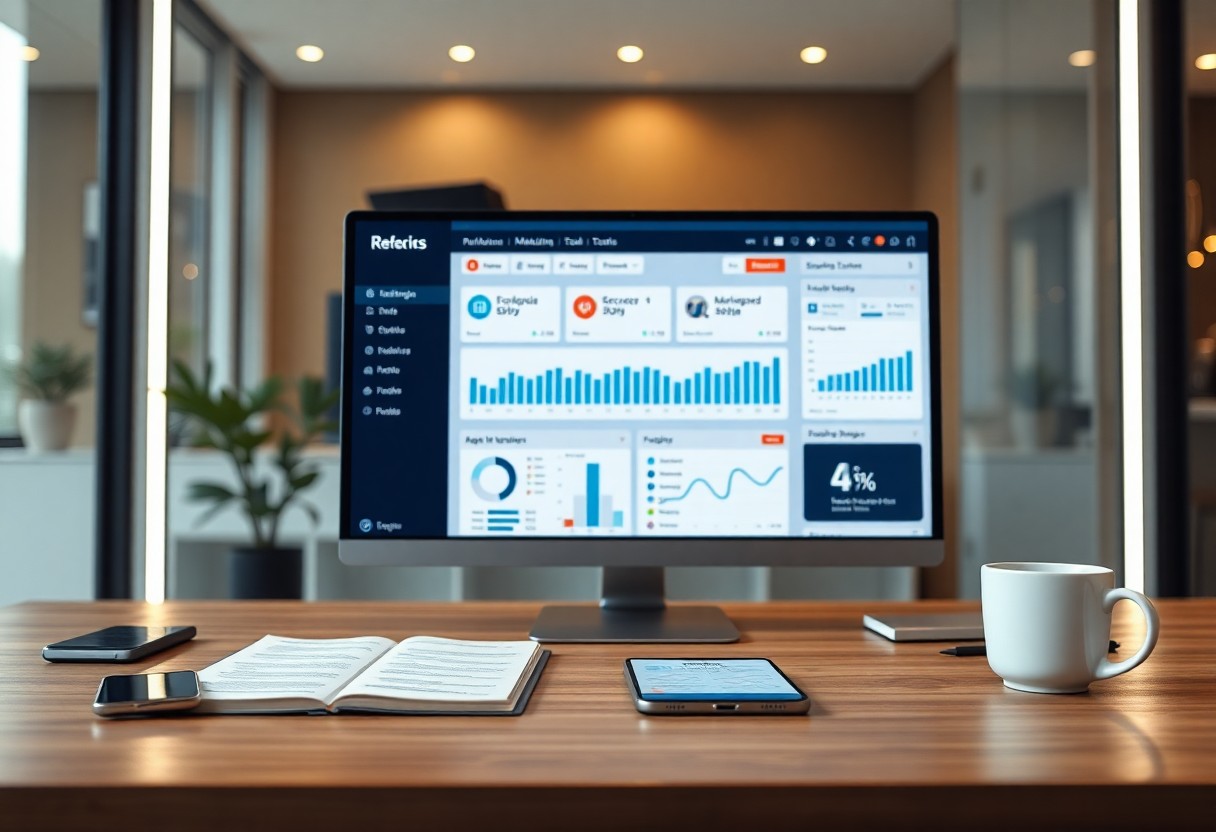
How to Use AI to Uncover Hidden Consumer Insights in Your Data.
This guide will empower you to harness the power of AI in analyzing your data, revealing valuable consumer insights that can drive your business decisions. By leveraging advanced algorithms and machine learning techniques, you can uncover trends, preferences, and behaviors that are often hidden beneath the surface. You will learn step-by-step how to implement AI tools effectively, transforming your data into actionable insights that can enhance your marketing strategies and improve customer engagement.
Harnessing the Power of Data: Setting the Stage for AI Insights
Data serves as the foundation for AI-driven insights, enabling businesses to tap into trends and behaviors that were previously difficult to discern. Establishing a robust data collection strategy is your first step. Identify the sources of consumer data, such as transaction histories, social media interactions, and customer feedback. By consolidating these datasets, you create a comprehensive view of your consumers that fuels AI algorithms, helping to unlock powerful insights that inform your marketing strategies and product development.
The Value of Consumer Data in Today’s Market
Consumer data has become a vital asset in today’s market, guiding business decisions and enhancing customer experiences. With nearly 2.5 quintillion bytes of data generated daily, leveraging this information allows you to better understand your audience, predict trends, and tailor offerings to meet specific needs. Companies using data-driven insights have reported up to a 15% increase in customer satisfaction and a noticeable boost in loyalty, highlighting the importance of data in creating competitive advantages.
How AI Transforms Data into Actionable Insights
AI seamlessly transforms raw data into actionable insights by employing advanced algorithms that analyze patterns, correlations, and anomalies within your datasets. Machine learning models learn from historical data to predict future consumer behaviors, enabling targeted marketing campaigns and personalized experiences. Businesses that integrate AI into their analytics processes can see a direct increase in conversion rates, with studies showing up to a 30% uplift after implementing AI-driven recommendations.
This transformation process is epitomized by effective tools that sift through massive datasets quickly, extracting meaning and relevance. For example, a retail company leveraging AI analytics can identify customer purchasing patterns during holiday seasons, enabling the creation of tailored promotions at peak times. By analyzing factors such as demographics, buying history, and preferences, you can sharpen your marketing efforts, leading to increased engagement and sales. Embracing AI not only streamlines operations but also equips you with the insights needed to stay one step ahead of consumer demands.
Identifying Key Metrics: The Foundation of Insight Discovery
Determining the right metrics lays the groundwork for uncovering deep consumer insights. Focusing on metrics that align with your business goals enables you to track consumer behavior effectively, understand preferences, and identify trends. By establishing these key performance indicators (KPIs), you create a framework that guides your AI-driven data analysis, allowing for targeted decision-making and strategy development.
Essential Metrics to Monitor Consumer Behavior
Monitoring specific metrics like customer lifetime value (CLV), churn rate, and net promoter score (NPS) enhances your understanding of consumer interactions. CLV helps predict revenue potential from individual consumers, while churn rate reveals retention effectiveness. NPS assesses customer satisfaction, guiding improvement efforts. Analyzing these metrics collectively leads to insightful strategies aligned with consumer needs.
Tools for Collecting and Organizing Data for AI Analysis
Utilizing effective tools for data collection and organization streamlines the analysis process. Platforms like Google Analytics, Tableau, and CRM systems help you gather and structure data efficiently. These tools provide visualizations which assist in identifying patterns, making it easier to inform AI models about consumer behavior and preferences, ultimately refining your marketing strategies.
Platforms such as Google Analytics allow for comprehensive tracking of website interactions, while Tableau provides powerful data visualization capabilities that help elucidate complex datasets. Customer relationship management (CRM) tools not only collect consumer data but also facilitate segmentation and targeted outreach efforts. By integrating these tools, you cultivate a rich dataset that enhances your AI algorithms, enabling more accurate predictions and insights into consumer behavior over time.
Decoding Consumer Sentiment: The Role of Natural Language Processing
Natural Language Processing (NLP) serves as a powerful tool for converting unstructured text data into actionable insights about consumer sentiment. By analyzing customer reviews, social media comments, and survey responses, you can gain a clearer understanding of how consumers feel about your products and brand. This not only enhances your marketing strategies but also informs product development, ultimately leading to better customer experiences.
Understanding Consumer Sentiment through Text Analysis
Text analysis allows you to sift through large volumes of consumer feedback efficiently, revealing underlying emotions and opinions. By employing sentiment analysis techniques, you can categorize sentiments as positive, negative, or neutral. This approach provides immediate visibility into consumer perceptions, enabling you to align your business strategies with customer expectations effectively.
Implementing NLP Techniques to Extract Hidden Sentiments
Utilizing NLP techniques such as tokenization, sentiment scoring, and classification can unveil nuanced consumer sentiments that traditional analysis might overlook. Machine learning models can be trained on past data to identify patterns, allowing you to extract sentiments accurately. Incorporating tools like Python’s NLTK or TextBlob can streamline the process, giving you a scalable approach to analyze real-time consumer feedback.
Implementing NLP techniques involves several steps to ensure accurate sentiment extraction. Start by cleaning and preprocessing your text data to eliminate noise. Next, apply tokenization to break down sentences into smaller components for analysis. You can then use sentiment analysis libraries to score the overall sentiment of each piece of text. This allows you to capture not just a general sentiment but also identify specific aspects consumers like or dislike. Analyzing sentiments over time can reveal trends and shifts in consumer perceptions, enabling you to stay ahead of market demands. A case study involving a popular cosmetic brand demonstrated that using NLP helped uncover hidden dissatisfaction about a specific product line, prompting timely reformulations and significant sales recovery.
Predictive Analytics: Anticipating Future Consumer Trends
Leveraging predictive analytics allows you to forecast future consumer behaviors and trends, thus staying ahead in a competitive market. By examining historical data and identifying patterns, you can make informed predictions about what consumers are likely to want or need in the future. This approach not only enhances your decision-making but also empowers you to align your strategies with shifting market dynamics effectively.
Techniques for Building Predictive Models
You can use various techniques to build robust predictive models, including regression analysis, decision trees, and machine learning algorithms. Each method draws on historical data to learn patterns and forecast future outcomes. By employing these techniques, you enhance your model’s accuracy and refine your approach to predicting consumer preferences and behaviors.
Case Examples of Successful Trend Forecasting
Numerous companies have successfully implemented predictive analytics to anticipate consumer trends. For instance, Netflix utilizes sophisticated algorithms to predict viewer preferences, enhancing user engagement and retention. Similarly, Amazon employs predictive models to optimize inventory and recommend products, resulting in a seamless shopping experience and increased sales.
Case studies like Netflix and Amazon illustrate the effectiveness of predictive analytics in real-world applications. Netflix’s algorithms analyze user behavior, enabling it to suggest shows that typically resonate with viewers, significantly boosting time spent on the platform. Amazon, on the other hand, utilizes purchase history and browsing data to recommend products, ensuring personalized shopping experiences that drive higher conversion rates. These examples underscore the immense potential of predictive analytics in shaping strategic business initiatives based on consumer trends.

Implementing AI-Driven Strategies: Turning Insights into Action
Translating data insights into actionable strategies involves a structured approach that aligns with your overall business objectives. Start by identifying key insight areas that can drive your marketing, product development, and customer experience initiatives. Collaborate with cross-functional teams to brainstorm and prioritize the implementation of these insights, ensuring to leverage AI tools for real-time decision-making and optimizations. Integrating feedback loops will enhance your strategies as you adapt to ongoing consumer behavior changes.
Aligning Business Strategies with Consumer Insights
Your business strategies should be a direct reflection of the consumer insights unearthed through AI analytics. By mapping these insights to your goals, you can create targeted marketing campaigns or tailor product offerings that resonate with your audience. For example, if AI reveals a growing preference for sustainability, you might shift your product line to include eco-friendly options, enhancing brand loyalty and engagement.
Measuring the Impact of AI-Driven Decisions on Business Outcomes
Quantifying the effectiveness of AI-driven decisions involves tracking key performance indicators (KPIs) related to sales, customer satisfaction, and operational efficiency. Implement A/B testing to evaluate how changes impact consumer behavior, and utilize analytics dashboards to analyze trends over time. By comparing pre- and post-implementation metrics, you can gauge success and adjust strategies accordingly.
Measuring the impact of AI-driven decisions on business outcomes goes beyond surface-level metrics. Delve into specific data points such as conversion rates, customer retention rates, and average order values. For instance, a retail brand that implemented AI-driven product recommendations noted a 30% increase in sales within three months. Regularly reviewing these data points not only highlights successful initiatives but also informs future strategies, keeping your business agile in a dynamic market landscape.
Conclusion
Following this guide, you can harness AI technologies to reveal hidden consumer insights within your data. By leveraging advanced analytics, machine learning, and natural language processing, you’ll be able to uncover patterns and trends that traditional methods might overlook. This not only enhances your understanding of consumer behavior but also enables you to make data-driven decisions that align with your audience’s needs. Embrace these tools to transform your data into actionable insights, ultimately leading to more effective marketing strategies and improved customer satisfaction.


